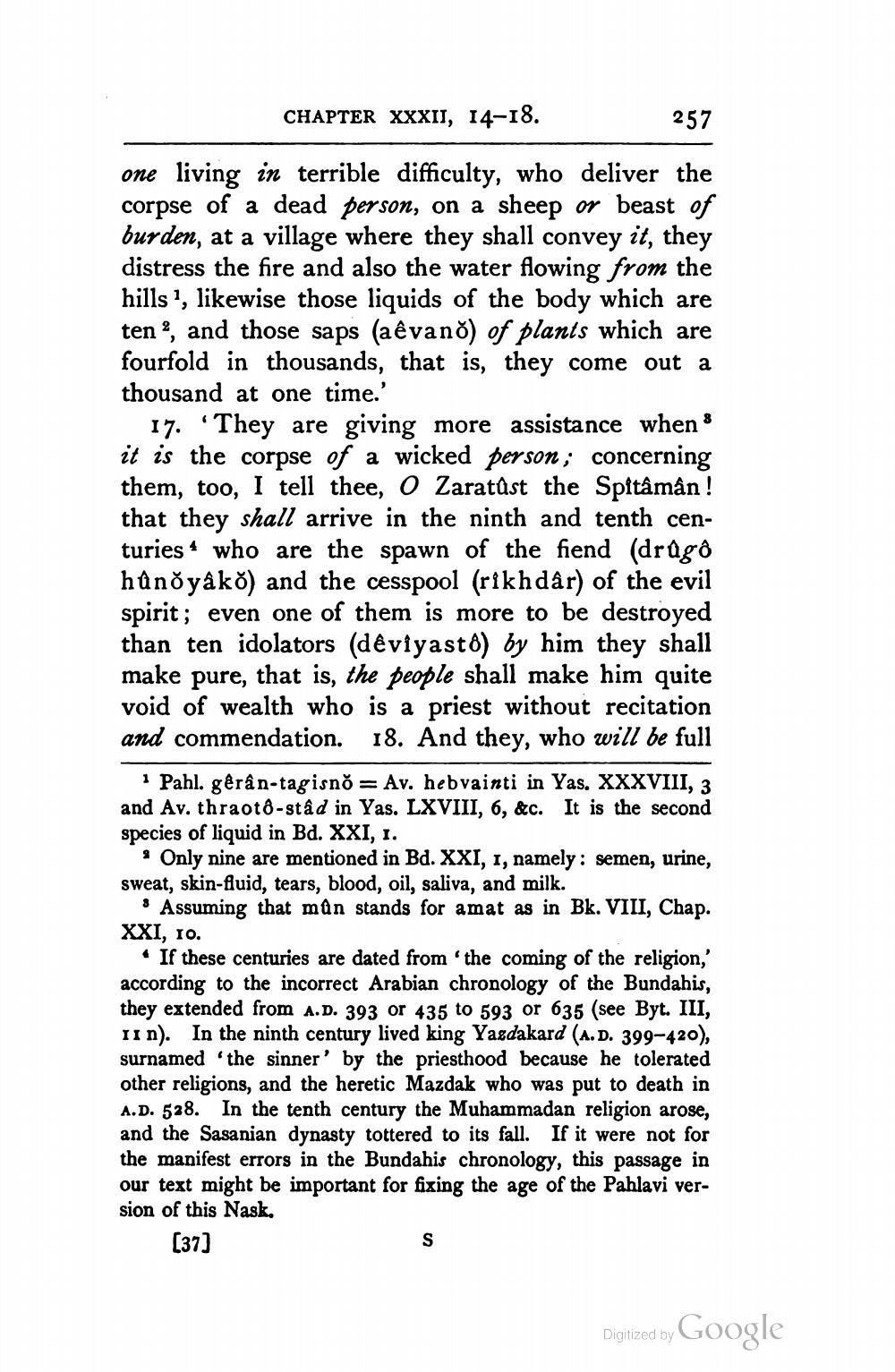________________
CHAPTER XXXII, 14-18.
257
one living in terrible difficulty, who deliver the corpse of a dead person, on a sheep or beast of burden, at a village where they shall convey it, they distress the fire and also the water flowing from the hills ?, likewise those liquids of the body which are ten?, and those saps (aêvano) of plants which are fourfold in thousands, that is, they come out a thousand at one time.'
17. 'They are giving more assistance when 8 it is the corpse of a wicked person; concerning them, too, I tell thee, O Zaratūst the Spitâmân! that they shall arrive in the ninth and tenth centuries * who are the spawn of the fiend (dragð hůněyako) and the cesspool (rikhdar) of the evil spirit; even one of them is more to be destroyed than ten idolators (dêviyasto) by him they shall make pure, that is, the people shall make him quite void of wealth who is a priest without recitation and commendation. 18. And they, who will be full
1 Pahl. gêrân-tagisno = Av. hebvainti in Yas. XXXVIII, 3 and Av. thraoto-stad in Yas. LXVIII, 6, &c. It is the second species of liquid in Bd. XXI, 1.
9 Only nine are mentioned in Bd. XXI, 1, namely: semen, urine, sweat, skin-fluid, tears, blood, oil, saliva, and milk.
• Assuming that mûn stands for amat as in Bk. VIII, Chap. XXI, 1o.
• If these centuries are dated from the coming of the religion,' according to the incorrect Arabian chronology of the Bundahis, they extended from A.D. 393 or 435 to 593 or 635 (see Byt. III, In). In the ninth century lived king Yasdakard (A.D. 399-420), surnamed the sinner' by the priesthood because he tolerated other religions, and the heretic Mazdak who was put to death in A.D. 528. In the tenth century the Muhammadan religion arose, and the Sasanian dynasty tottered to its fall. If it were not for the manifest errors in the Bundahis chronology, this passage in our text might be important for fixing the age of the Pahlavi version of this Nask,
[37]
Digitized by Google




